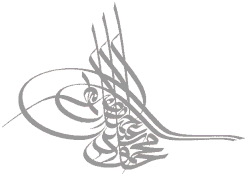Tughra
Very elaborate decorated versions were created for important documents that were also works of art in the tradition of Ottoman illumination, such as the example of Suleiman the Magnificent in the gallery below.
The tughra was designed at the beginning of the sultan's reign and drawn by the court calligrapher or nişancı on written documents.
[1] Tughras served a purpose similar to the cartouche in ancient Egypt or the Royal Cypher of British monarchs.
[2] The primary argument for the first school is a remark by Mahmud al-Kashgari in his Dīwān Lughāt al-Turk:[2] The tughragh is the seal and signature of the king [in] Oghuz dialect and not known to [Western] Turks; I do not know its origin.
The tughra has a characteristic form, two loops on the left side, three vertical lines in the middle, stacked writing on the bottom and two extensions to the right.
The flowing lines could symbolize the wide reach of Suleyman's rule and his future conquests.



